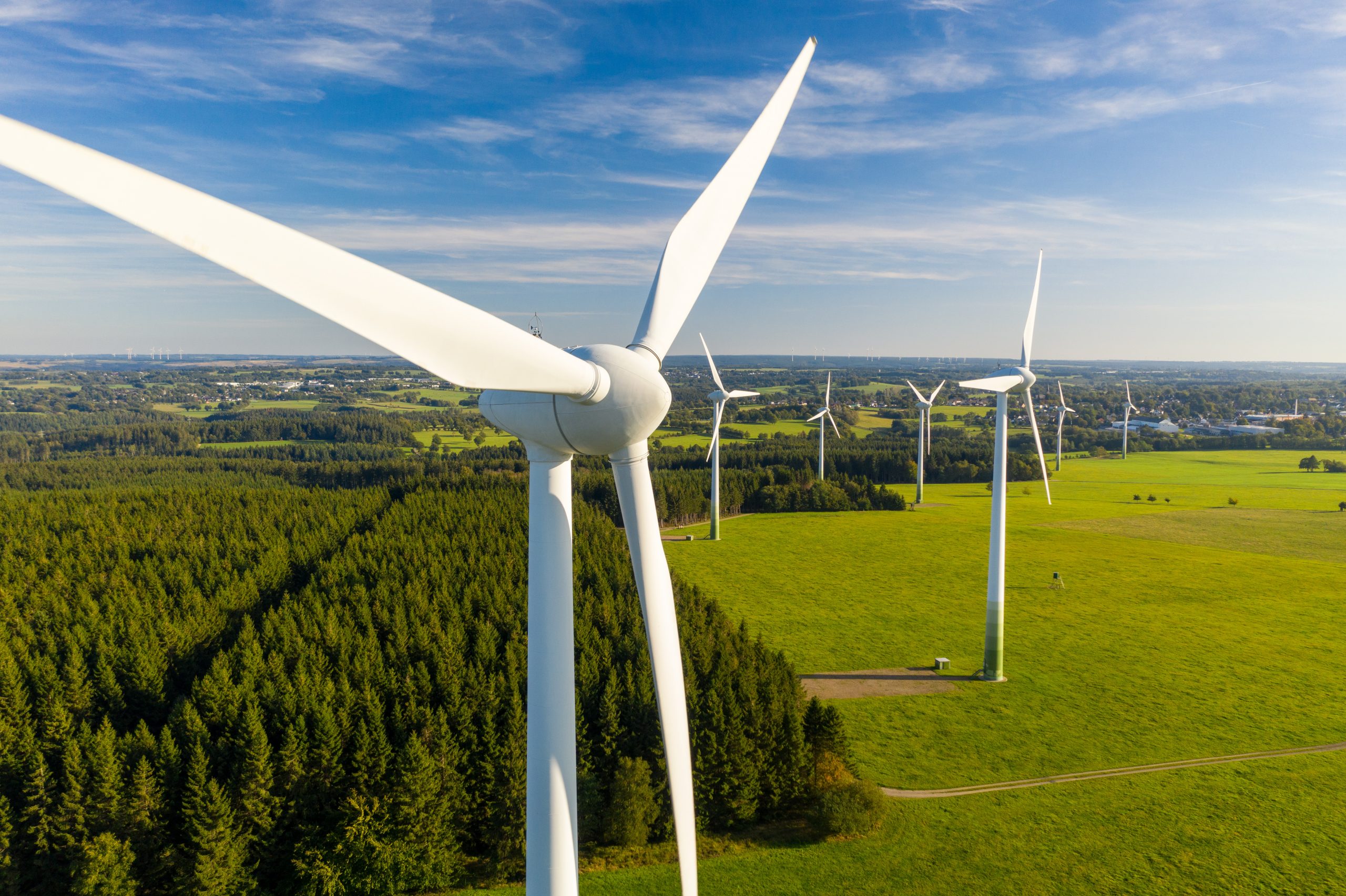With Commercial Wind Comes Rising Community Home Values, UConn Researcher Finds
Siting new commercial wind energy installations is no easy feat.
In addition to the topographical and infrastructure needs that have to be taken into consideration, public opposition is often significant.
Turbines are large and highly visible. People express concerns over potential public safety, noise, and environmental impacts. Communities worry about the effect on local property values.
But at least on that last point – property values – the concerns may be more nuanced, according to research recently published in the journal Energy Research & Social Science.
The study – co-authored by Eric Brunner, a professor of economics and policy with the UConn School of Public Policy – found that contrary to public narratives that emphasize the negative impact of wind energy installations on property values, communities actually tend to experience a surprising and meaningful 3% increase in property values overall once a wind energy installation becomes operational.
Brunner – along with colleagues Ben Hoen from the Lawrence Berkeley National Laboratory and David Schwegman from American University – has been examining the community acceptance of renewable energy for several years. They’ve published extensively on various aspects of the topic.
Prior research, explains Brunner, has shown that when a new wind energy installation is announced, home values within about a half-mile to a mile away typically experience a decline of between five and 10%, according to studies looking at impact in Europe, and the decline is experienced often before construction even begins.
“Yes, indeed, if you’re right next to one of these wind turbines, you see a decline in housing values that starts during the construction phase, even earlier,” Brunner acknowledges. “It starts as soon as the announcement comes out, and they stay lower for quite some time.
“But interestingly, once the installation goes operational, we saw that housing prices started to recover.”
With commercial wind installations comes the potential for a flood of revenue to local communities that could be used to improve services, lower tax rates, and invest in things like public education, infrastructure, and other community needs.
“And that should have the opposite effect on housing values,” Brunner says. “That should actually lead people to want to move into these communities, maybe not within half a mile of the wind turbine, but communities are quite large, right? And so, we decided to test that.”
For their latest study, Brunner and his co-authors turned to local school district data to analyze what was happening in communities before a wind installation came to town, what happened after the installation became operational, and how that compared to school districts within the same county that did not have a wind energy installation.
Their focus on school district data was deliberate.
“School districts are just about the smallest independent government with taxing authority in the United States,” Brunner says. “There’s typically 10 or 15 in every county. Their small geographical size means we would think we might be able to find measurable impacts on government revenues.”
School districts also have “the best finance data,” Brunner explains.
“It is collected annually for every single school district in the United States, whereas for other jurisdictions like towns and villages and cities, it’s collected every five years, and it’s in a much smaller subsample every year.”
They compared the federally managed United States Wind Turbine Database, which is updated quarterly and contains the location and characteristics of all wind energy projects in the country – including each turbine’s geographic coordinates and operation year – with data on school district location and composition to determine impacted districts. They looked at factors like school district enrollment, teacher-to-pupil ratios, and expenditures in the five years before and 10 years after the wind energy project became operational.
They also used data on home sales from 2005 to 2021, consisting of specific details on more than 21 million transactions nationwide, to examine home value fluctuations in the districts during the same time periods.
What they found was that school district-wide home values increased by approximately 3% after a wind energy installation became operational, when compared to homes in non-wind districts. They found that the siting and operation of a wind energy installation within a school district is correlated with relatively large increases in per-pupil revenues and expenditures and smaller, but significant, declines in pupil-to-teacher ratios.
They also found that the effect of wind energy installations on both school district revenues and home values were strongly correlated with the size of the energy project – the larger the installation, the greater the positive impact.
Finally, they found that adverse impacts on property values after the announcement of an installation project, but before its construction, were limited to homes within one mile of the project, with no significant effects farther away.
While Brunner notes that the study can’t pinpoint exactly what communities are responding to – be it an increase in property tax revenues or payment in lieu of taxes revenues from the installation, an influx of clean energy workers and their families, or other community and demographic changes that might be coincidentally happening at the same time in any given district – the findings have significant implications for both the policies and the discourse surrounding the largely rural communities where these commercial installations tend to be sited.
“My co-authors and I really hope that this starts to change the dialogue and general framing of the impacts of renewable energy on communities, away from the NIMBY aspects and toward the positive impacts that these types of installations can really have,” says Brunner.
“Before we published the study, that really was the discourse. The discourse was about, ‘Oh, we’re worried about our housing values.’ Well, maybe you shouldn’t be worried. Maybe it’s going to go the opposite direction for the vast majority of homeowners. And maybe we could figure out something to compensate the ones that are closest to the turbines.”
For their next study, Brunner and his collaborators will be repeating their look at school-district level data, but turning their lens toward the growing number of large commercial solar energy installations in the U.S.
This study was supported by the U.S. Department of Energy’s Wind Energy Technologies Office under Contract No. DE-AC02-05CH11231.
Latest UConn Today
- Raising the Bar in Healthcare Leadership TrainingUrban Service Track/AHEC Scholars Program is based at UConn Health.
- After Receiving Internship Offers From The Big Four, Accounting Alumna Isabella Williams ’25 Is Thriving at PwCUConn’s Accounting program has a strong track record. Some 91 percent of UConn accounting majors had a full-time job or attended graduate school within three months of the 2025 graduation.
- In Memoriam: Corina Morris, CLAS Academic AdvisorThe College of Liberal Arts and Sciences remembers longtime academic advisor Corina Morris, who supported generations of UConn students with compassion, care, and a deep commitment to their success
- UConn Health Minute: Precision Heart Failure CareHeart failure affects more than seven million Americans and for many it’s not due to bad habits such as smoking or not eating right. UConn Health and The Jackson Laboratory are taking a new approach and focusing on personalized care based on a patient’s genetic profile.
- Meet the Undergraduate: Stanley Lu ‘26 (BUS)Supporting first-generation students at UConn’s Center for Career Readiness and Life Skills
- Comfort in 3D: Study Finds Virtual Reality Eases Patient AnxietyEven a simple skin procedure can make someone a little nervous. At UConn Health, a new study is helping patients find calm in an unexpected way – through virtual reality.













